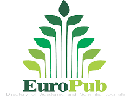Antimicrobial activity by solvents extracted from Ocimum basilicum herb against multidrug resistant gram negative rods.
Abstract
Background: Failure of treatment with antibiotics occurs due to increase in number of Multidrug resistant gram negative bacteria, worldwide. The objective of this study was to find out the antimicrobial activity of crude ethanolic extract and its further three fractions by Ocimum basilicum leaves against multi drug resistant gram negative rods.
Material and Methods: This descriptive study was conducted in the Department of Microbiology, University of Health Sciences, Lahore from 1st july 2016 to 30th june 2017. Total 80 multidrug resistant gram negative rods were included in this study. Agar dilution method was performed to determine MIC of crude ethanolic extract and different fractions i-e n-hexane, chloroform and ethyl acetate of Ocimum basilicum leaves against multidrug resistant gram negative rods i-e ESBLs and carbapenemase producers. Muti-inoculater was used for inoculation.
Results: The mean MICs of crude ethanolic extract, n-hexane fraction, chloroform fraction, and ethyl acetate fraction of Ocimum basilicum against ESBLs were 100.0±8.00, 168.13±8.00, 176.88±8.00 41.75±8.00 respectively. Similarly, the mean MICs of crude ethanolic extract, n-hexane fraction, chloroform fraction, and ethyl acetate fraction of Ocimum basilicum against carbapenemase producers were 77.50±8.00, 113.75±8.00, 132.50±8.00 and 29.50±8.00 respectively.
Conclusions: Ethyl acetate fraction and crude ethanolic extract from leaves of Ocimum basilicum showed good antibacterial effectiveness against ESBLs and carbapenem resistant organisms than other fractions. This finding may also promote the effective use of O. basilicum herb and its components in modern medicine.
Copyright (c) 2021 Journal of Islamabad Medical & Dental College

This work is licensed under a Creative Commons Attribution-NonCommercial 4.0 International License.

This is an Open Access article distributed under the terms of the Creative Commons Attribution-Non Commercial License (http://creativecommons.org/licenses/by-nc/4.0), which permits unrestricted use, distribution, and reproduction in any medium, provided the original work is properly cited.














